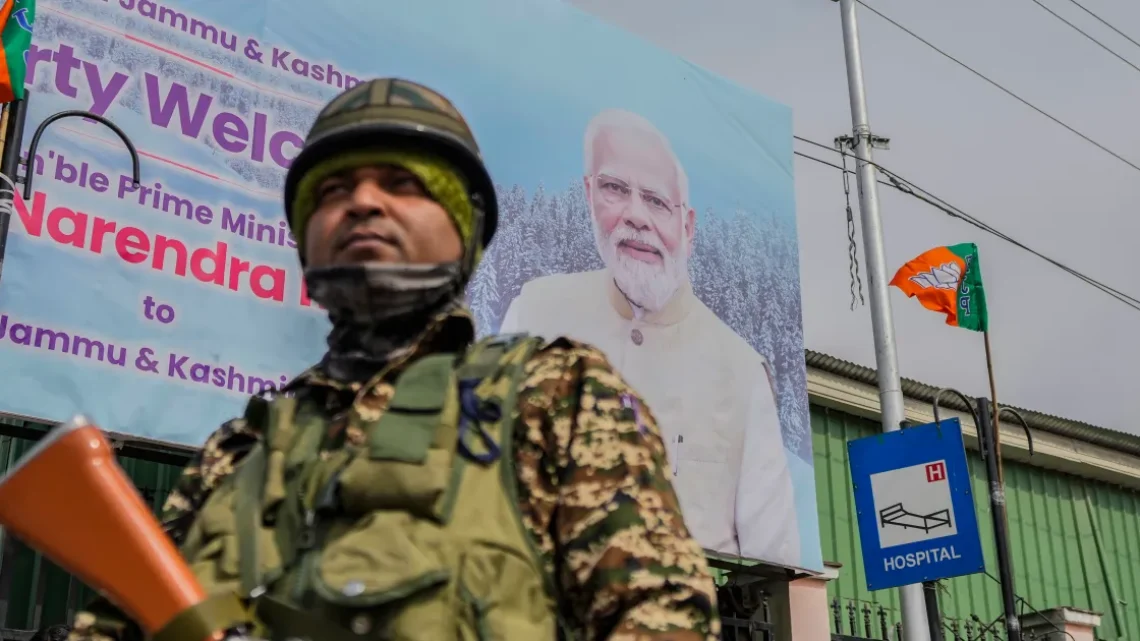
Militarization and Marginalization: How India is Reshaping Governance in IIOJK
November 2, 2024The Indian government’s continued encroachment on civil authority in Indian Illegally Occupied Jammu and Kashmir (IIOJK) has brought unprecedented military dominance to the region, with the armed forces assuming control over resources, land, and governance at levels unseen elsewhere in India. Since the 2019 abrogation of Article 370, which stripped IIOJK of its special status, the Modi administration claims the region is progressing toward normalcy. However, evidence on the ground reflects a vastly different reality, with military presence and operations expanding while civil administration diminishes.
One stark example of this militarization is the recent appointment of Colonel Vikrant Prashar from the Indian Army’s elite Para regiment as the Senior Superintendent of Police (SSP) for Training and the Special Operations Group within the Jammu and Kashmir Police. This blending of military and police roles signifies a shifting landscape in which security and counterinsurgency tactics increasingly overshadow conventional law enforcement practices, raising concerns about human rights and accountability in a region already heavily scrutinized for civil liberties issues.
The Modi-led Bharatiya Janata Party (BJP) initially defended the dissolution of IIOJK’s special status to spur development and reduce violence, yet the militarized response reveals contradictions in this narrative. For example, the escalation of police armament in the region, including supplying law enforcement with military-grade weaponry, undercuts the claim of peace and stability. This heavy-handed approach not only misrepresents the situation but actively stifles dissent, relying on stringent security measures that have transformed Kashmir into one of the most militarized zones in the world, with over one million troops deployed.
In addition to the mounting militarization, there is growing concern over the extent of control the military has over IIOJK’s resources and land. The army’s dominion in the region extends far beyond any comparable zone in India, with vast tracts of land being appropriated under the guise of “strategic” requirements. Such land acquisitions displace civilians, disrupt livelihoods, and increase resentment among the local population. With the military effectively embedded in government departments, including the police, education, and health sectors, civil administration struggles to maintain any meaningful influence, eroding the region’s autonomy and civic agency.
These developments align with a broader agenda reportedly tied to the BJP’s Hindutva ideology, aiming to redefine the social and political fabric of IIOJK. The high troop presence and ongoing civilian surveillance have been instrumental in enforcing restrictive laws and policies designed to suppress Kashmiri voices. This strategy effectively undermines the spirit of self-determination promised to the people of Kashmir by United Nations Security Council resolutions, raising questions about India’s commitment to its democratic principles.
The international community has been largely kept in the dark about these developments due to restricted media access and limited reporting from the ground. While India frames its actions in IIOJK as essential for national security, critics argue this rationale has become a convenient cover for efforts to silence opposition and to impose sweeping changes to the region’s demographics and governance.
For lasting peace and stability in South Asia, experts insist that a genuine resolution of the Kashmir issue is essential. They argue that meaningful progress can only be achieved by respecting IIOJK’s residents’ rights and engaging in dialogue recognizing their aspirations.

